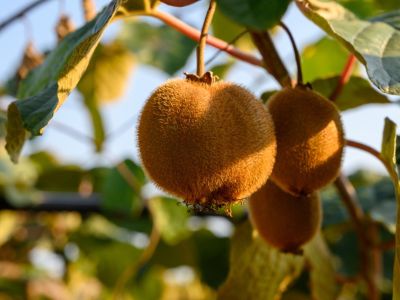Fruit Companion Planting
Companion planting is an age old planting practice that seeks to increase the diversity of the garden. Increased diversity decreases the spread of disease and pest infestation. Pairing symbiotic plants also has other benefits. Companion planting may add nutrients to the soil, harbor beneficial insects, aid in pollination, act as support or trellising, shade tender plants and roots, retard weeds, or help retain water. Some even say that appropriate plant pairings can enhance the flavor of a particular fruit or vegetable. Companion planting also minimizes maintenance by the gardener. Reduction of plant pests, particularly, eliminates the need for harmful pesticides or other chemicals. The result is a more organically grown garden with healthier fruit and vegetables.
Kiwi Plant Companions
Most kiwis need both male and female plants to produce fruit. They also can be expected to grow to about 15 feet (4.5 m.) long, so they need a strong trellis framework. They thrive in deep, fertile, well-draining soil and in full to partial sun. Consider the kiwi’s growing requirements mentioned above before choosing kiwi plant companions and opt for those with similar needs. Some kiwi plant companions that fit the bill include:
Grapefruit Blueberry Grapes Raspberries Currants
Kiwi companion plants aren’t just other fruiting varieties, however. Herbs work well in close proximity to kiwis such as:
Marjoram Catnip Lemon balm Lavender
Flowering plants like geranium, clematis, and ajuga also make ideal companions.
